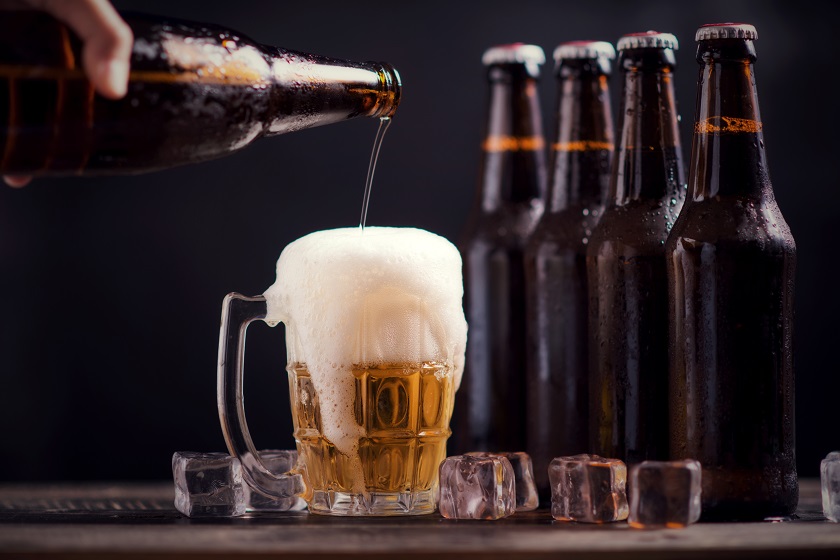By Tunde Animasaun
Global beer market size for 2022 has been valued at USD 737.2 billion. This estimation is gleaned from reports on the alcoholic market.
According to a report published by SkyQuest Technology, the global beer market is expected to reach USD 989.29 billion by 2028 from $768.17 billion in 2021. The report stated further that the market is anticipated to grow at a Calculated Annual Growth Rate (CAGR) of 3.68 percent from 2021 to 2028.
This growth in the beer market is attributed primarily to the increasing demand for premium and craft beers. In addition, the growing popularity of home-brewing and microbreweries is also expected to contribute to the market growth over the forecast period.
Fortunebusinessinsights.com also corroborated the above in its report which stated that the global beer market is projected to grow from $768.17 billion in 2021 to $989.48 billion in 2028 at a CAGR of 3.68 percent in forecast period, 2021-2028.
In its own report, IMARC Group, a leading market research company that offers management strategy and market research reports worldwide stated that the global beer market grew from $219.48 billion in 2022 to $235.69 billion in 2023 at a compound annual growth rate (CAGR) of 7.4 percent.
According to the report, the Russia-Ukraine war disrupted the chances of global economic recovery from the COVID-19 pandemic, at least in the short term. “The war between these two countries has led to economic sanctions on multiple countries, a surge in commodity prices, and supply chain disruptions, causing inflation across goods and services and affecting many markets across the globe. The beer market is expected to grow to $303.11 billion in 2027 at a CAGR of 6.5 percent.”
The report stated further that the increasing demand for ready-to-drink (RTD) beverages is expected to drive the alcoholic beverage market in the forecast period. An RTD is a single-use packaged beverage that is ready for immediate consumption at the time of purchase. RTD drinks are gaining popularity among working adults due to their clean labels and functionality. The introduction of new flavours in the range of RTD alcoholic beverages, ease of carrying, and convenience are expected to boost the demand for RTD alcoholic beverages. Increasing demand for RTD beverages, including RTD alcoholic beverages, is expected to drive the alcoholic beverage market going forward
Looking at the volume of alcoholic drink consumption, a report published in The Lance, found that, across the globe, rates of individual alcohol consumption have soared.
The report also indicated that, “Beer is the most important segment in the global Alcoholic Drinks market, both by volume and value. In comparison to other segments of the Alcoholic Drinks market, this segment is already quite concentrated, with the top 5 players accounting for roughly 60 percent of global volume – half of which is attributable to market leader AB InBev alone.”
A new research conducted by a team of investigators from the Centre for Addiction and Mental Health, in Toronto, Canada, and the Technische Universität Dresden, in Germany, also revealed that people consume more alcohol, on a global level, compared with nearly 30 years ago.
Not only this, but the current upward trend is set to continue over the next few decades, according to the study authors’ estimates.
Jakob Manthey, the research’s first author, explained: “Our study provides a comprehensive overview of the changing landscape in global alcohol exposure.”
Other researchers also found some surprising and worrisome trends. For instance, they found that, while patterns of alcohol consumption have not changed much in high-income countries, low- and middle-income regions are seeing a staggering increase.
They also found that at the global level, the team found that the total volume of alcohol consumed per year increased by as much as 70% between 1990 and 2017, from 20,999 million liters per year to 35,676 million liters per year.
“Before 1990, most alcohol was consumed in high-income countries, with the highest use levels recorded in Europe. However, this pattern has changed substantially, with large reductions across Eastern Europe and vast increases in several middle-income countries, such as China, India, and Vietnam,” explained Manthey.
Moreover, he added: “This trend is forecast to continue up to 2030, when Europe is no longer predicted to have the highest level of alcohol use.”
Statista, in its research, found that revenue in the alcoholic beer segment amounts to US$0.58tn in 2023. The market is expected to grow annually by 5.31 percent (CAGR 2023-2027). They also found out that in global comparison, most revenue is generated in China (US$118.70bn in 2023) and the volume is expected to amount to 180,311.1ML by 2027. The market for the Alcoholic Beer segment is expected to show a volume growth of 2.0 percent in 2024.
The reports also agreed that the global beer market has found a new lifeline in the Asia Pacific region and is expected to account for more than 40% of the global demand in 2025. As of 2021, the region holds over 28% of the global beer market. The region is also expected to witness the highest growth rate over the forecast period, owing to the increasing disposable incomes and changing lifestyles of consumers in countries such as China, India, and Japan.
“There are many reasons for this impressive growth, including a growing middle class with more disposable income, an increasing preference for western-style lagers, and a growing number of women drinkers. The three largest markets in Asia are China, Japan, and South Korea. China is by far the largest, accounting for over 55 percent of Asia’s beer consumption. It is followed by Japan (15 percent) and South Korea (5 percent). In fact, in 2021, China alone generated revenue of over $121 billion. We have also observed that the average beer consumption per person has increased to 13.84 liters as of October 2022. We expect the Asia Pacific beer market consumption to surpass 70,000 million liters by 2025 given the rapidly increasing middle class population and increasing inclination of youths to alcoholic beverages,” SkyQuest Technology said.
The major companies in the global beer market include Anheuser-Busch InBev SA/NV, Heineken N.V., Carlsberg Breweries Group, Asahi Group Holdings Ltd., Constellation Brands, China Resources Beer (Holdings) Company Limited, The Molson Coors Brewing Company, Tsingtao Brewery Co Ltd., Thai Beverage public co., and kirin holdings co ltd.
According to vinepair.com, the ten best-selling beer brands globally are Snow, a Chinese beer brand, Budweiser from the AB InBev stable, Tsingtao, another Chinese brand, Bud Light, America’s No. 1 light lager beer, and Skol Also from AB InBev Others are: Heineken, Netherland’s premium beer, Harbin, another brand from AB
InBev, Yanjing another Chinese brand, Corona, a Mexican beer brand and Coors Light, the second best-selling American beer.
Finally, Skyquest Technology noted that the beer market is facing increasing competition from alternative beverages such as wine and spirits. To stay ahead of the competition, it is advised that brewers need to continue to innovate and invest in marketing and product development.







Comment
No comments found.